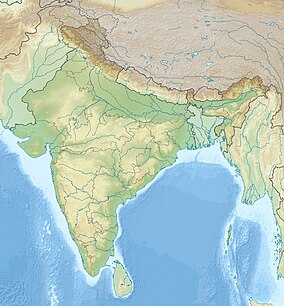|
Raimona National Park
Raimona National Park is located in extreme western part of Assam, India. It is spread across Gossaigaon and Kokrajhar subdivisions of Kokrajhar district of Bodoland Territorial Region.[1] HistoryRaimona National Park was initially recommended as Ripu-Chirang Wildlife Sanctuary being part of Ripu Reserved Forest and Chirang Reserved Forest being adjacent a part of it was also mooted to be within. Those were made owing to its significance for conservation of Asian elephants, gaur or Indian "bison" and golden langur, all of which have large populations in the area.[2][3][4] Raimona National Park was declared a national park on 5 June 2021 by the announcement of the Chief Minister of Assam on the occasion of World Environment Day at Gandhi Mandap, Guwahati. On 9 June 2021, its national park status was announced in Assam Gazette Notification no.FRW.02/2021/27 dtd. 8 June 2021.[citation needed] It is a part of a contiguous forest patch with an area of 422 km2 (163 sq mi) covering the northern part of the notified Ripu Reserve Forest with 508.62 km2 (196.38 sq mi), which forms the westernmost buffer to Manas Tiger Reserve in the foothills of Eastern Himalaya Biodiversity Hotspot.[citation needed] GeographyRaimona National Park is located in the Himalayan foothills. Its boundary is marked by the Sankosh River in the west, along the border between West Bengal and Assam, Saralbhanga River in the north and east, and part of Ripu Reserve Forest on the south.[citation needed] BiodiversityFloraRaimona National Park harbours 380 varieties of plants and orchids.[citation needed] Fauna  Raimona National Park is home to slow loris, Assamese macaque, Rhesus monkey and golden langur.[5] It also harbours Chinese pangolin, dhole, Himalayan black bear, crab-eating mongoose, jungle cat, leopard cat, Asian golden cat, Bengal tiger, leopard, clouded leopard, Asian elephant, gaur, Himalayan serow, sambar, chital, hog deer, barking deer, Himalayan porcupine and hispid hare.[6] AvifaunaRaimona National Park is an important bird and biodiversity area.[7] Avifauna includes white-bellied heron, swamp francolin, pheasant, grey peacock pheasant, Indian peafowl, Oriental darter, lesser adjutant, collared falconet, slender-billed vulture, white-backed vulture, besra, black baza, Jerdon's baza, osprey, Bengal florican, now perhaps extirpated, ibisbill, green imperial pigeon, mountain imperial pigeon, red-breasted parakeet, great pied hornbill, occasional rufous-necked and Indian grey hornbills, wreathed hornbill, hill myna and scaly thrush.[8] References
|
||||||||||||||||||||



